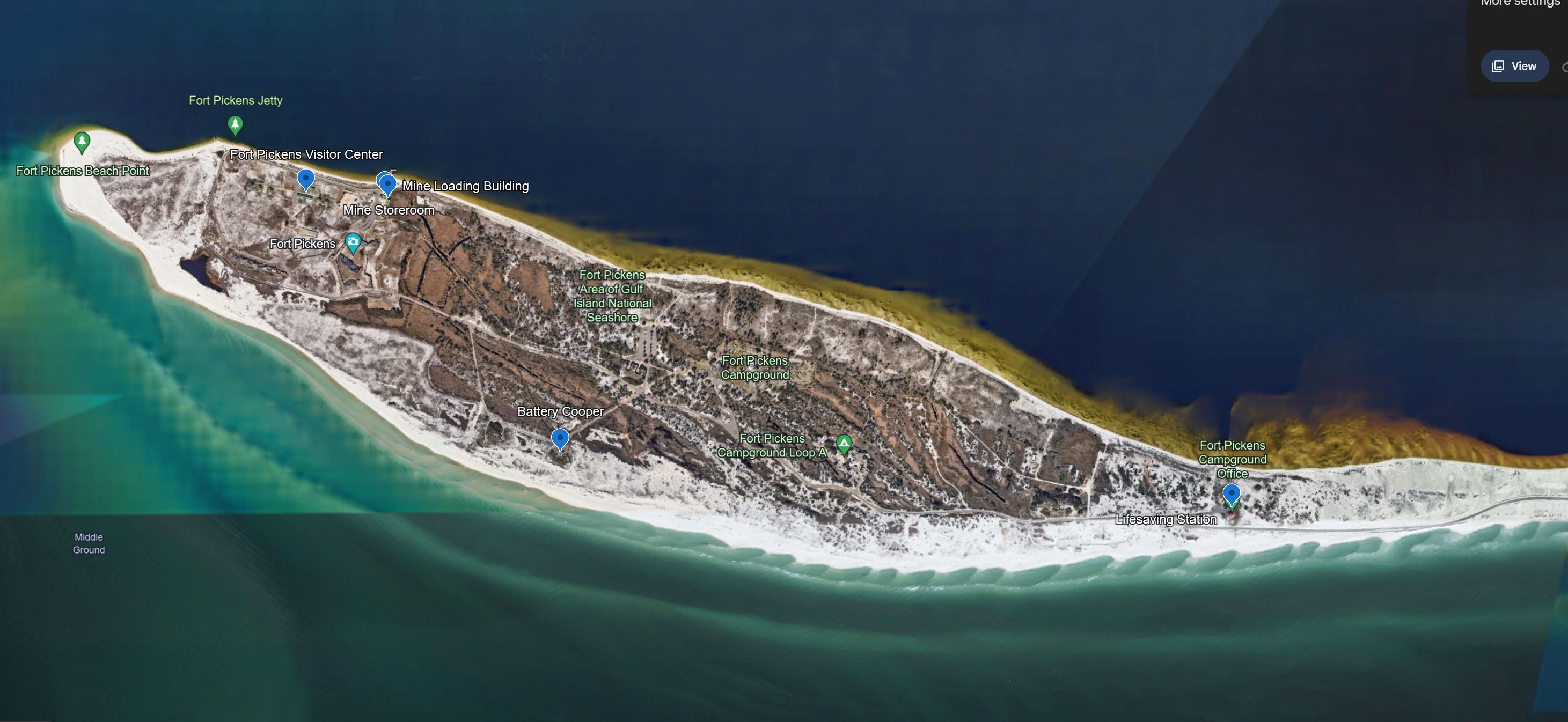News Release
You are viewing ARCHIVED content published online before January 20, 2025.
Please note that this content is NOT UPDATED, and links may not work. For current information,
visit https://www.nps.gov/aboutus/news/index.htm.

NPS
|
Subscribe
|
Contact: Stephenie Wade
GULF BREEZE, Fla. -- Gulf Islands National Seashore began an 800-thousand-dollar project on January 22, to install new exhibits in the Florida District’s Mine Loading Building, Battery Cooper, and the Santa Rosa Life-Saving Station.The project will also rehabilitate and repurpose exhibits from the former Naval Live Oaks Visitor Center to the Fort Pickens Visitor Center.
The project is expected to be completed in 2025. As a result, the Fort Pickens Visitor Center will be closed to the public in 2024. A temporary ranger contact station will be set up at historic Fort Pickens.
All these structures are on the National Register of Historic Places.
The Mine Loading Building is located directly north of Fort Pickens at the Pensacola Bay City Ferry Pier. The Mine Loading Building was constructed in 1907 to assemble underwater mines used to protect the entrance to Pensacola Bay. The building was one of a cluster of buildings used by the U.S. Army including the Mine Storeroom and the Cable Tank. In 2019 the restoration of the Mine Loading Building and the Mine Storeroom were completed. This building has never been open to the public.
Battery Cooper is located on the Gulf side of Fort Pickens Road adjacent to Battery 234. Battery Cooper is a concrete coastal battery completed in 1905 by the Army Corps of Engineers to modernize harbor defenses. It was deactivated in 1945. It is one of 15 coastal batteries within the national seashore. It has been open to the public in previous years seasonally. In 2023 the outside of the battery was treated for preservation.
The Santa Rosa Life-Saving Station is a two-story, white building located on the bay side of Fort Pickens Road. The original structure was built in 1908 to house equipment and boats for rescue missions on the water. With the establishment of the U.S. Coast Guard in 1915, the former Santa Rosa Life-Saving Station became a Coast Guard Station. In 1986 the Coast Guard relocated to Naval Air Station Pensacola and the building became home to National Park Service staff.
This project is being funded by revenue from park recreation fees which is solely dedicated to ensuring improvements and providing supplemental visitor services within the park to enhance the quality experience for all who visit.
At Gulf Islands, 80 percent of park recreation fees are retained by the park and are devoted to providing visitor service and maintaining facilities that directly serve visitors.
The national seashore is looking for local information, oral histories, photo collections, or artifacts that relate to these topics. If you have any, please email Guis_information@nps.gov.
About Gulf Islands National Seashore: Created in 1971, the national seashore stretches 160 miles along the northern coast of the Gulf of Mexico in Florida and Mississippi and includes barrier islands, maritime forests, historic forts, bayous, and marine habitats. It is the 8th most visited National Park Service site in the nation and the 3rd most visited campground with more than 5.8 million visitors in 2022. Visit us at www.nps.gov/guis, on Facebook and Instagram.
About the National Park Service: More than 20,000 National Park Service employees care for America's 428 national parks and work with communities across the nation to help preserve local history and create close-to-home recreational opportunities.
Images:
1. Ferry Plaza Mine Loading Building left, Mine Storeroom right
2. Battery Cooper
3. Santa Rosa Live-Saving Station
4. Fort Pickens Visitor Center
5. Map of sites
Last updated: January 23, 2024
